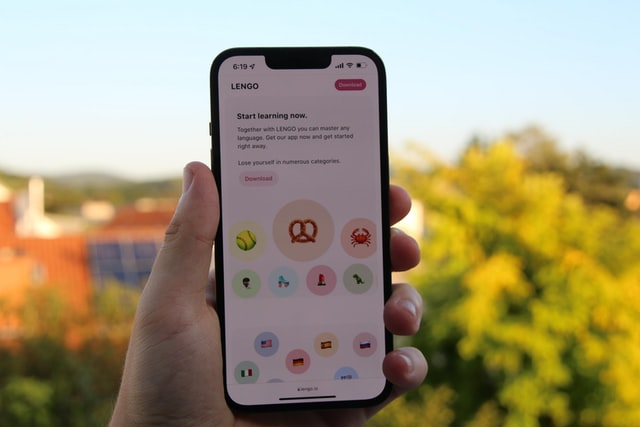The popularity of language learning apps has been steadily increasing over the past few years, with a market consisting of a mixture of newer apps (Duolingo, Memrise) alongside apps developed by established language learning companies (Babbel, Rosetta Stone). The consequences of ignoring notifications from the Duolingo owl even became a meme a few years ago. How effective are these apps in language learning?
Flexibility
There’s no need to find and pay for a class, travel to a venue or carry around heavy books.
A huge benefit touted by language learning apps is the flexibility – students can practise whenever they want, wherever they want…and often for free! There’s no need to find and pay for a class, travel to a venue or carry around heavy books.
But you can’t learn a language just by reading an interactive dictionary…
While apps provide flexibility for the way users approach their language practice, they often aren’t as flexible with the content that they provide.
While apps provide flexibility for the way users approach their language practice, they often aren’t as flexible with the content that they provide. Most free and standalone apps are heavily focused on vocabulary, which is an important area of language learning and one that app-based practice is particularly suited to.
Without a solid understanding of the grammar rules and structures, the student’s learning path quickly becomes one-dimensional.
Apps like Duolingo have accompanying artwork and audio to help with visual recognition and pronunciation, and many publishers have an app version of their bilingual/EFL dictionaries with integrated phonetics and/or audio. But you can’t learn a language just by reading an interactive dictionary – without having a solid understanding of the grammar rules and structures of the language, the student’s learning path quickly becomes one-dimensional. It’s essential to be able to recognise vocabulary, but mastering a language means knowing how to use words correctly in a way that is appropriate to the context, and apps don’t always – or don’t yet – have the functionality to do that well.
Motivation
It’s much easier to switch off your app’s notifications than it is to explain to a teacher why you haven’t shown up!
Students might find that they’re more motivated to practise because apps are designed to be engaging – they use bright artwork, an attractive interface, persistent notifications and gamified content to capture the users’ attention and keep them coming back. However, the independent learning style that apps offer sometimes doesn’t help with students’ motivation to practise in the long term – if they haven’t made a time or financial commitment the way they would if they had booked a face-to-face class, then it can be difficult to keep going. It’s much easier to switch off your app’s notifications than it is to explain to a teacher why you haven’t shown up!
Taking ownership of learning
Relying on apps can mean that users miss out on the main benefits provided by a teacher.
With some apps, students can choose the topics that they study and take responsibility for their own learning: they can go at their own pace, track their progress, and go back and repeat any modules that they struggled with. But students are not necessarily teaching experts, and relying on apps can mean that users miss out on the main benefits provided by a teacher and published digital or print resources.
Apps developed by publishers are typically designed to be part of a whole course rather than used in isolation.
A teacher can guide and support the student through a course that has been carefully structured by curriculum experts to introduce concepts that are easy to access, build on previous learning and prepare the student to progress. The apps developed by publishers to support their content are also typically designed to be part of a whole course offer rather than used in isolation – you might use an app to practise pronunciation, for instance, but this app helps the user work on the speaking skills they learnt in their lesson or in their course books.
Feedback
It’s perhaps better to consider apps as more of a support tool.
When they practise on apps, students can often get instant results and improve their scores, but meaningful feedback is also something that language apps can lack – some apps do offer a paid version where you can get feedback from a real person, but most free ones do not. A lot of exercises on language apps use a binary marking format, where answers are simply marked correct or incorrect and the student isn’t given any feedback. Consequently, the student knows what they got wrong, but not why or how serious the error is.
A further downside of automarking is that exercises must be designed to have one correct answer (or a limited number of variants) so that they can be marked without human input. This can mean that the language used in exercises is deliberately restrictive, and sometimes isn’t that realistic as a result – something which becomes a bigger problem at more advanced levels.
Apps can definitely be a positive learning tool, especially for complete beginners and casual learners. It’s easy for anyone to download an app and fun to pick up a few phrases by playing a word game, and they can be useful to get extra practice in certain skills or add variety to a new subject area. However, it’s perhaps better to consider apps as more of a support tool – a fun way to check and consolidate learning rather than act as a replacement for face-to-face teaching and curated resources.

